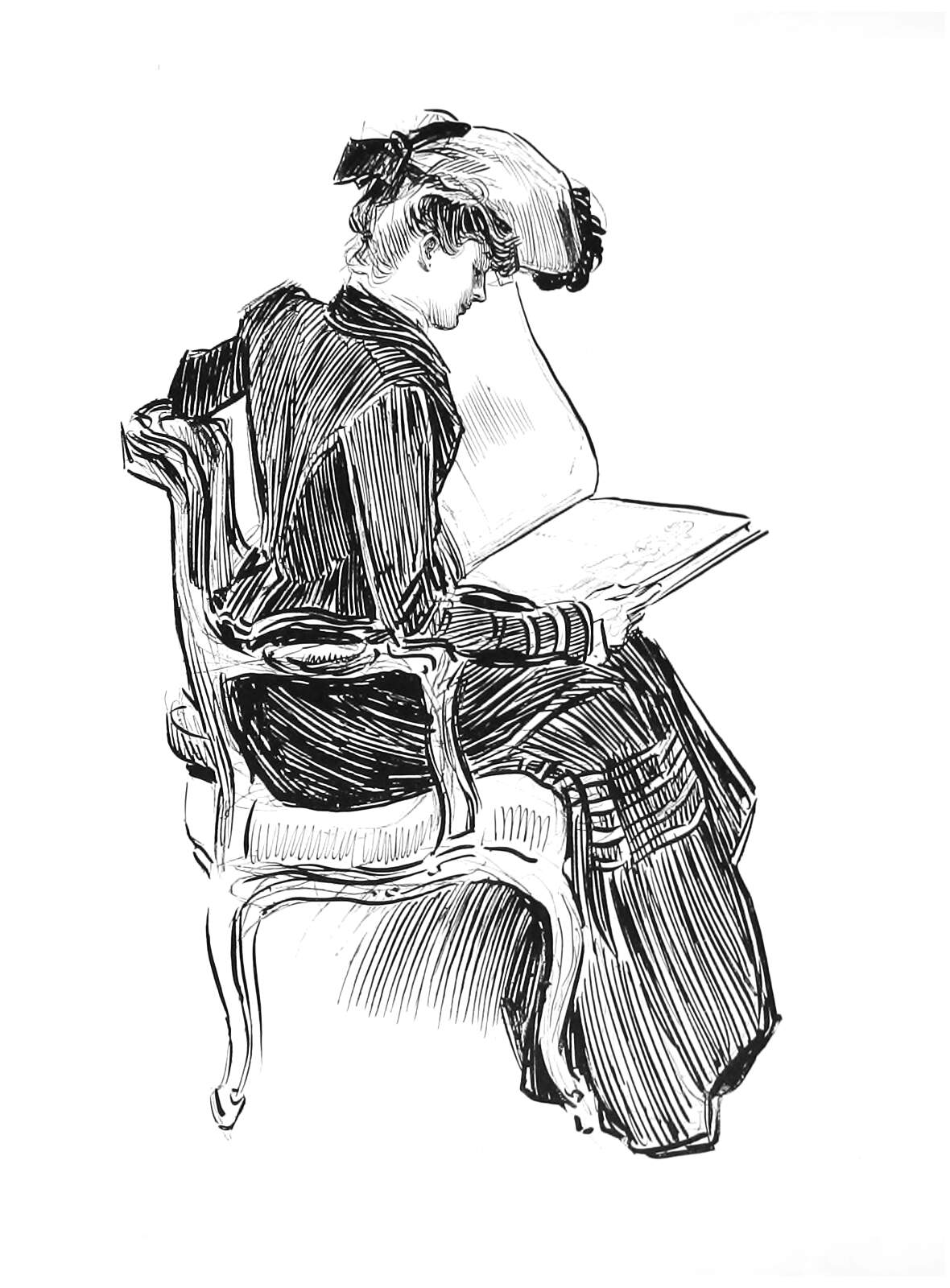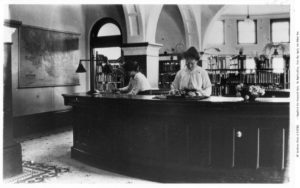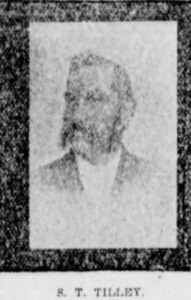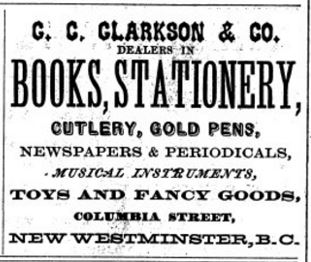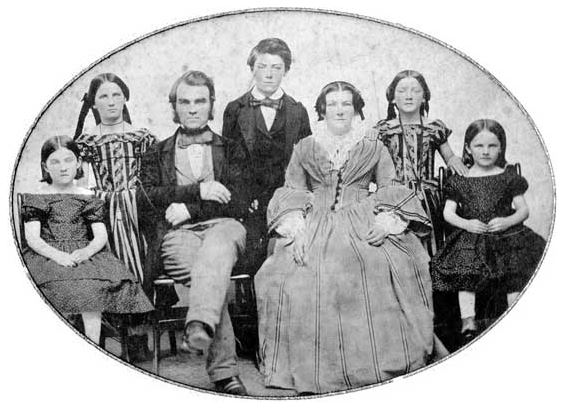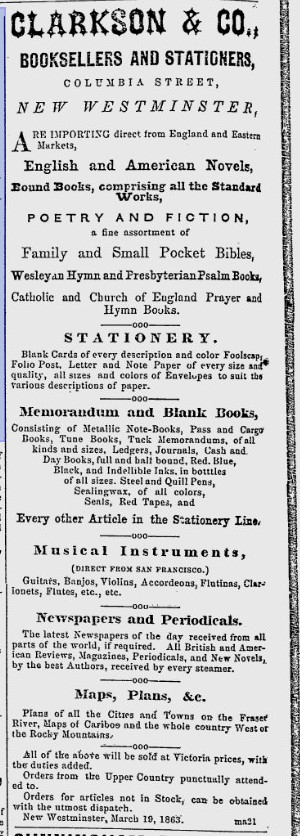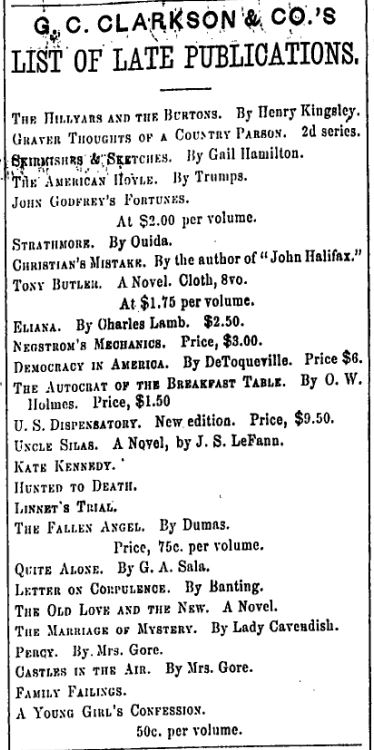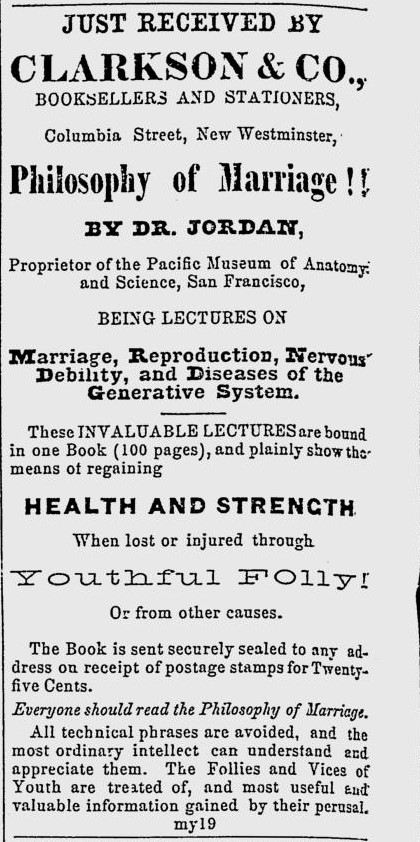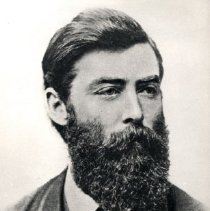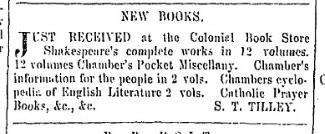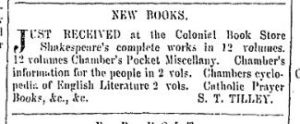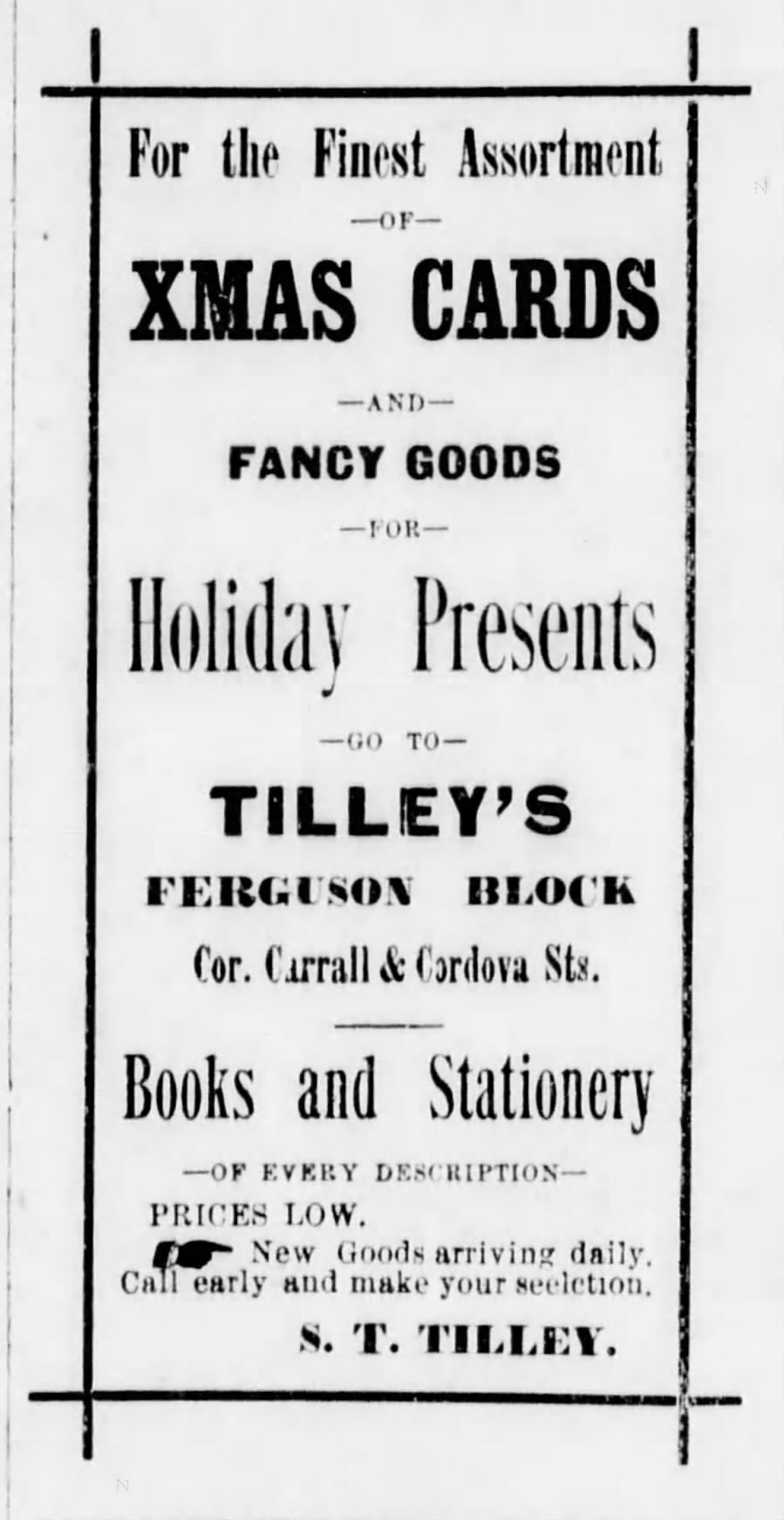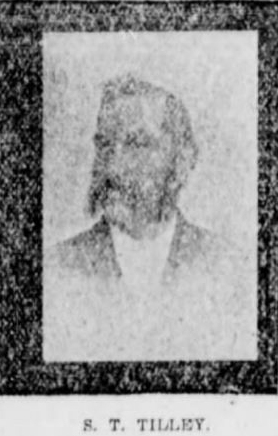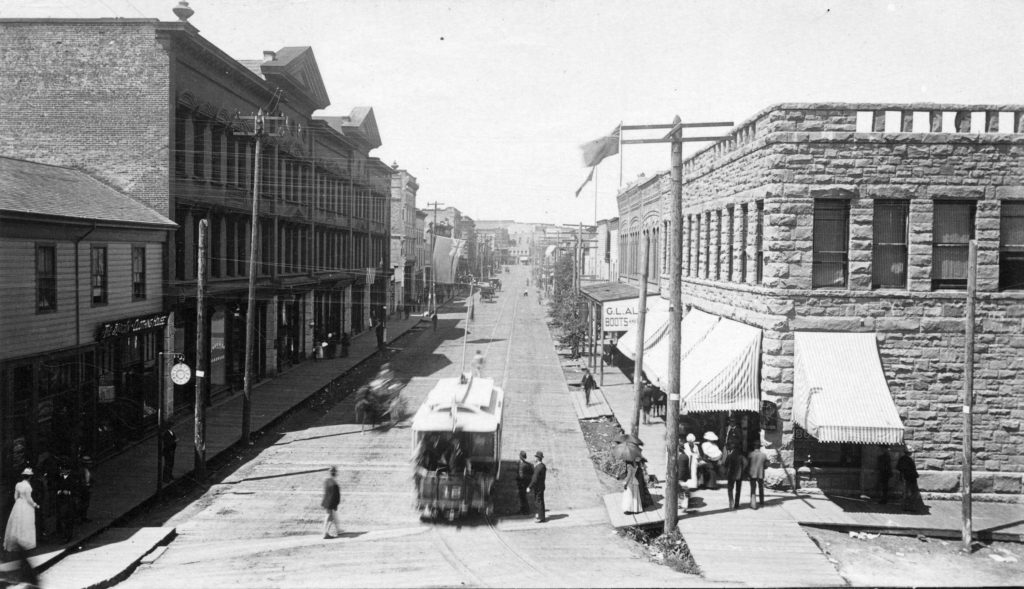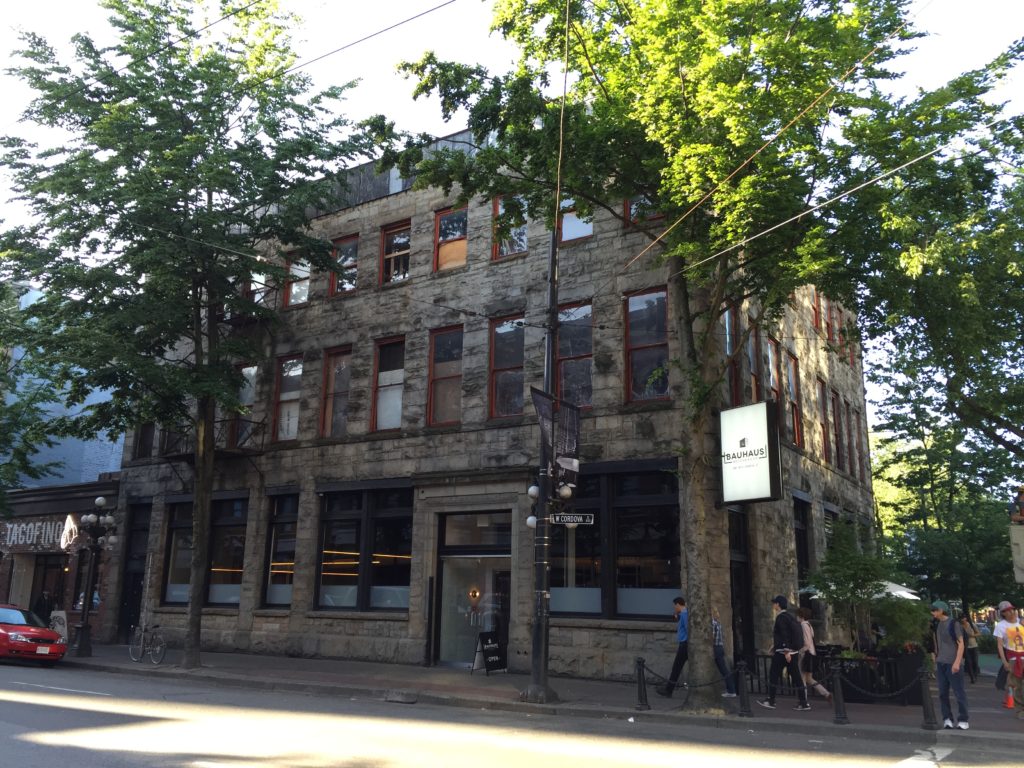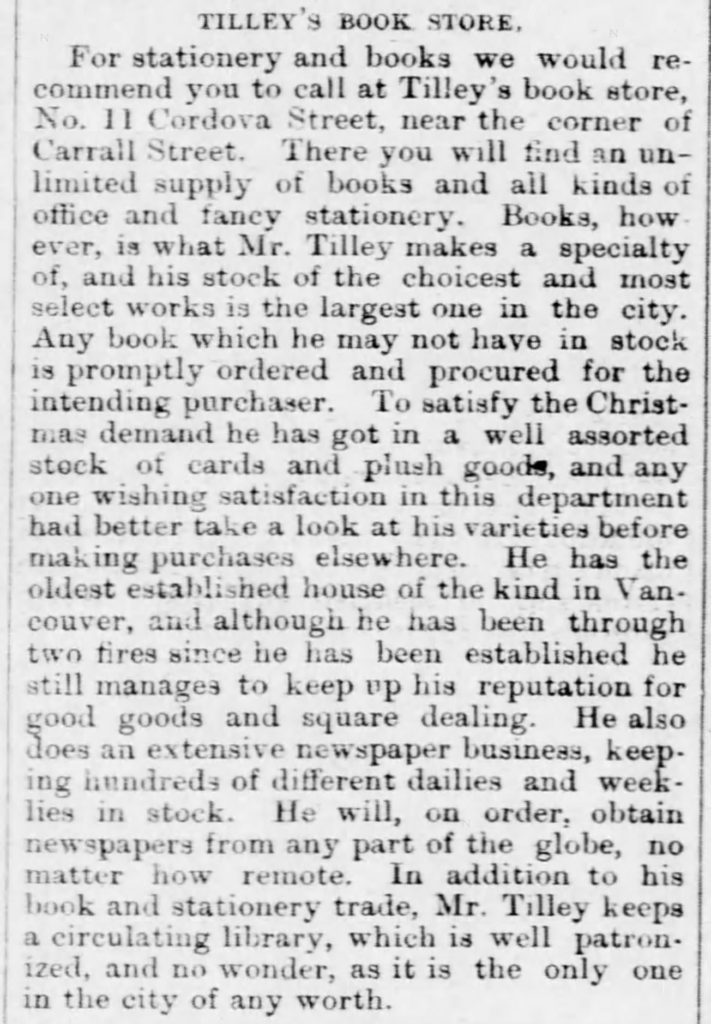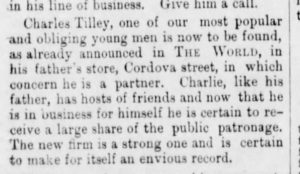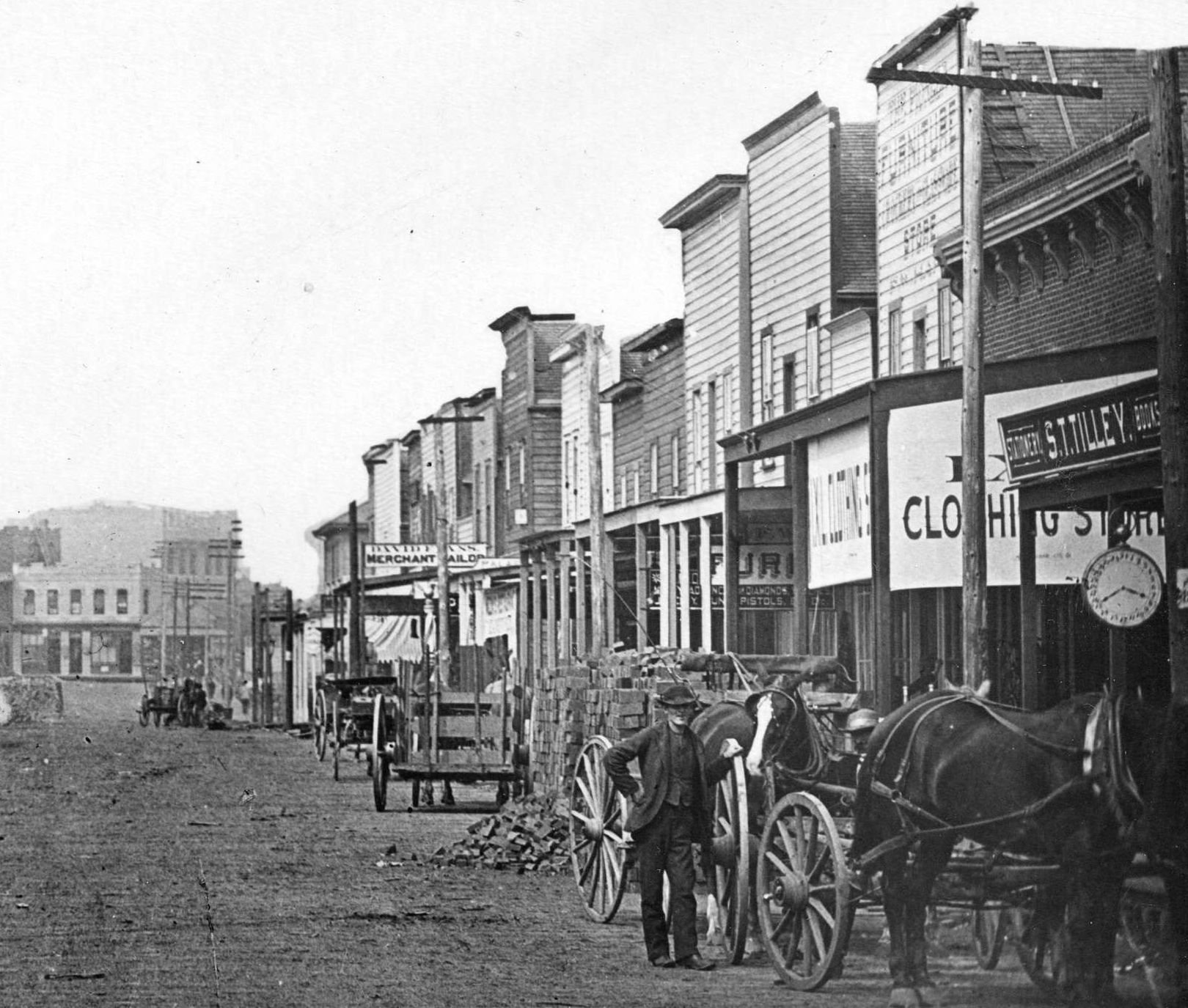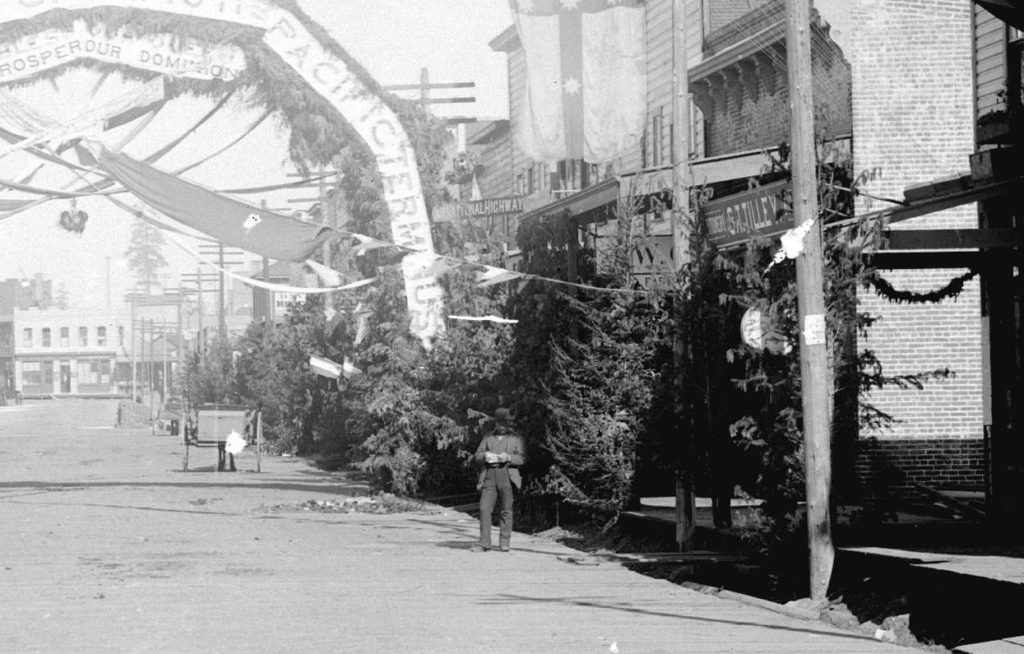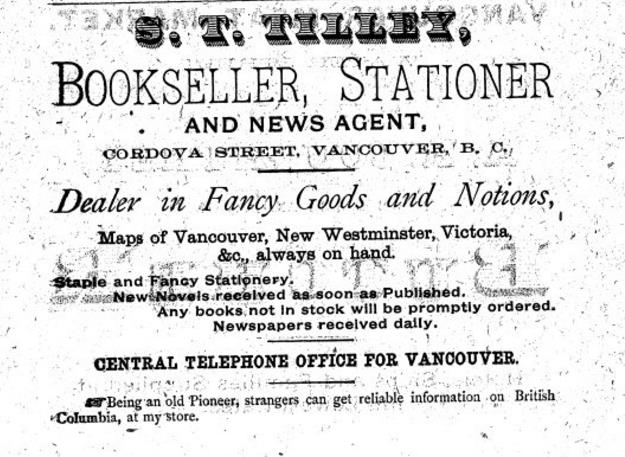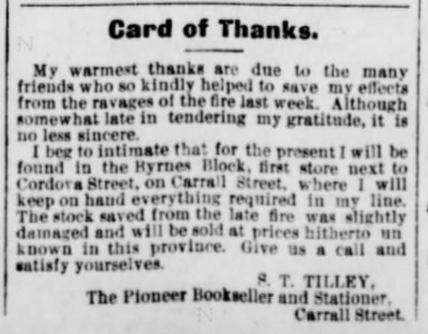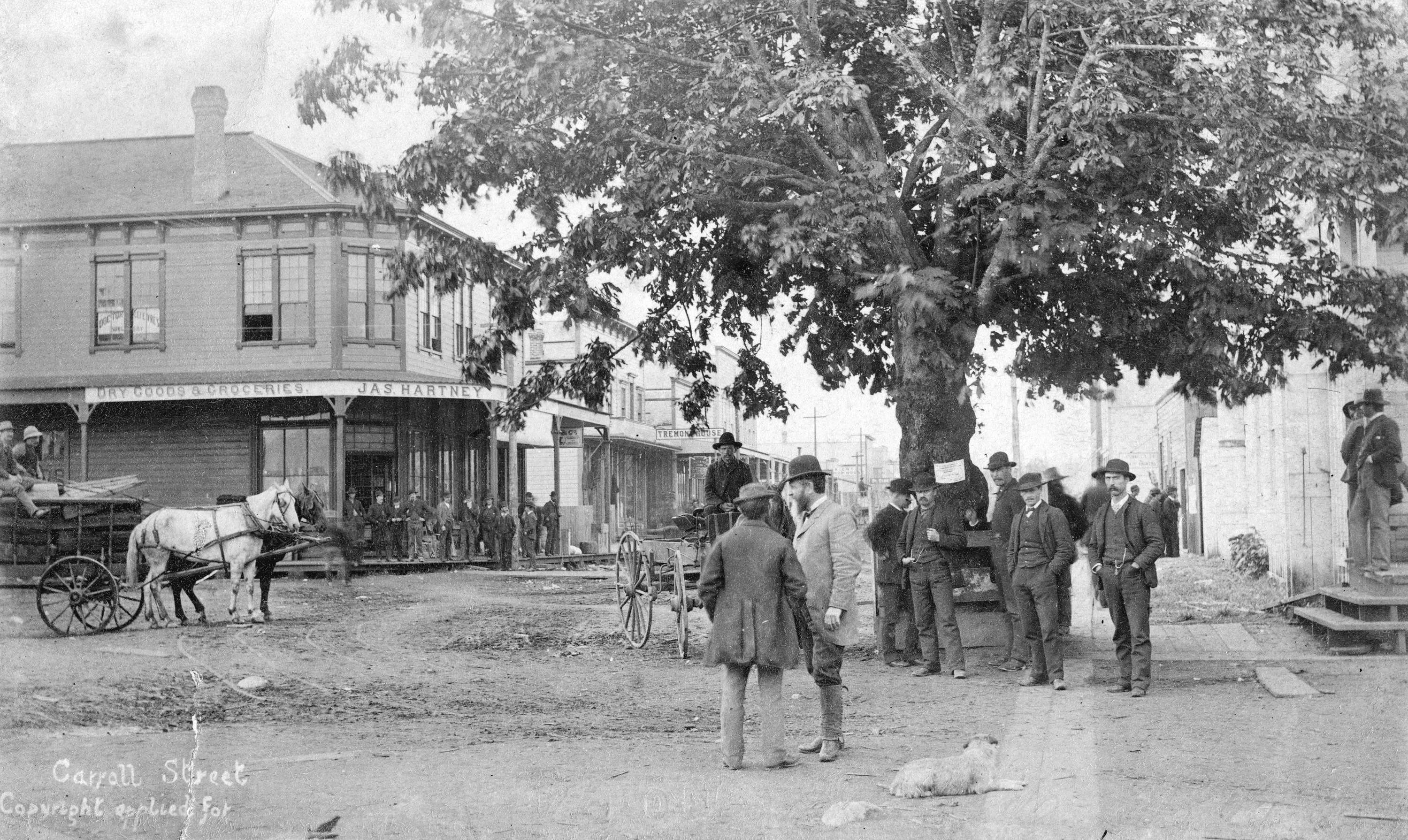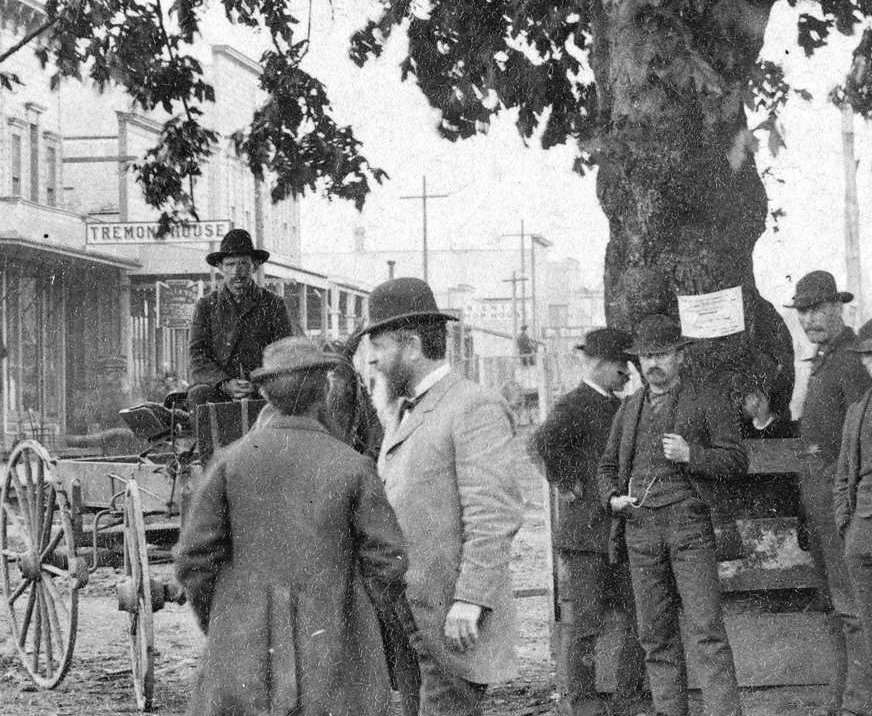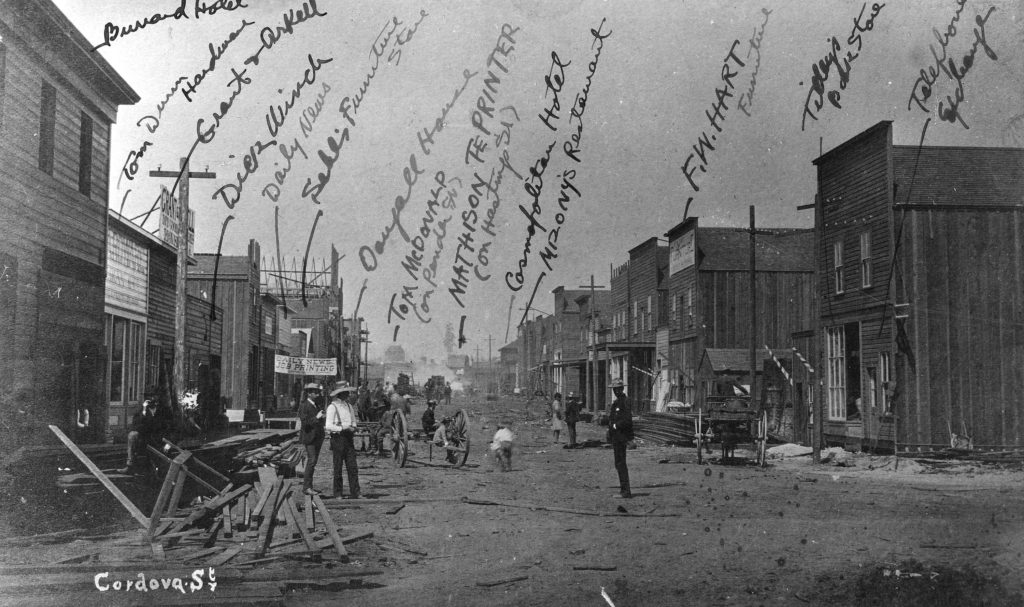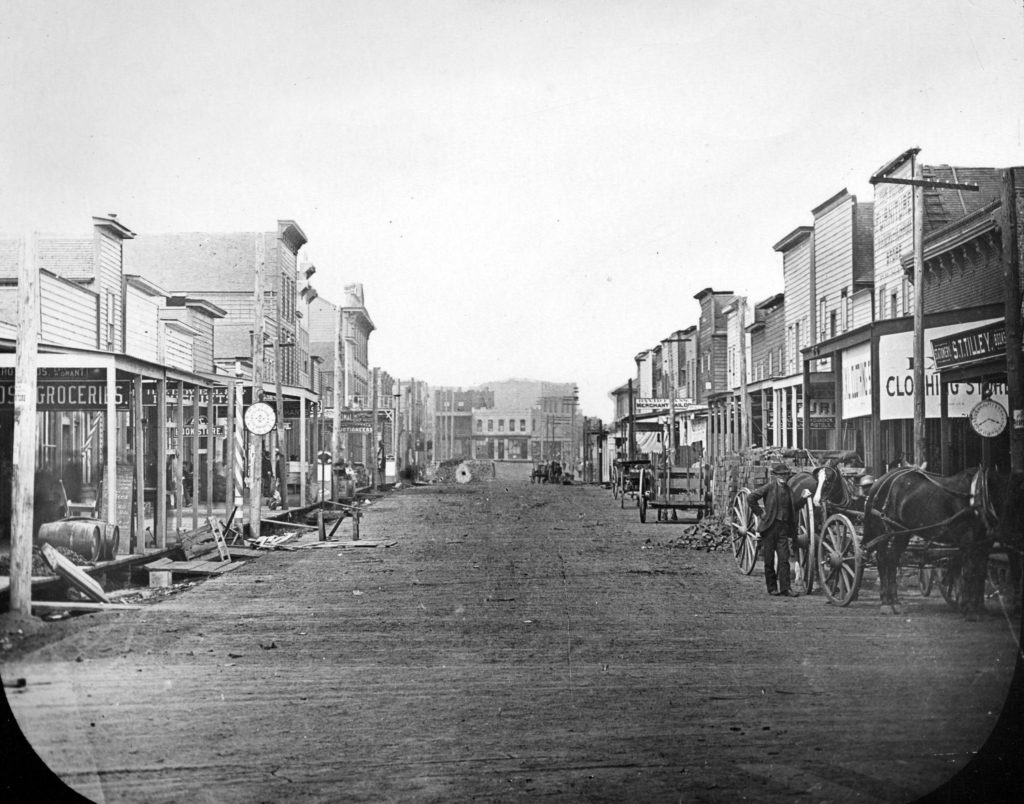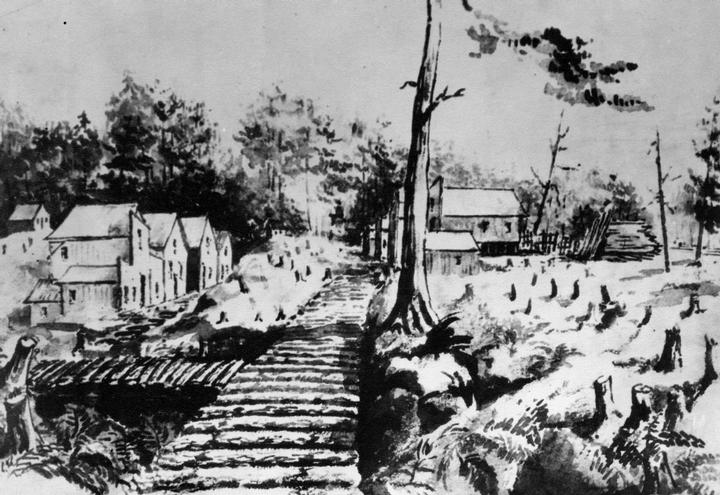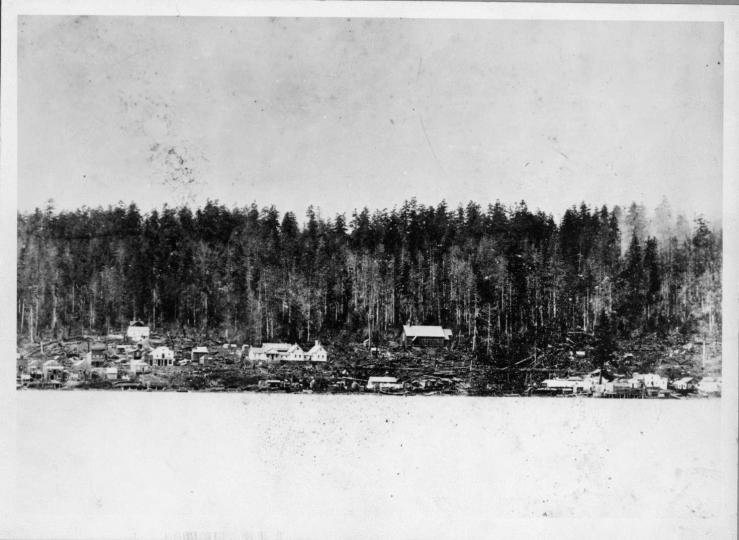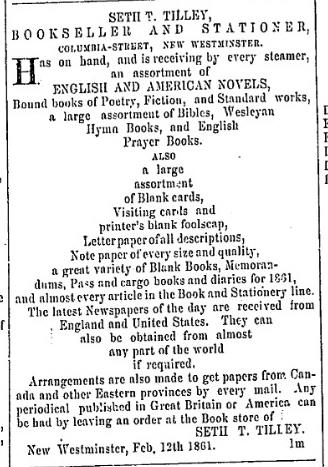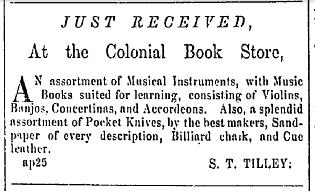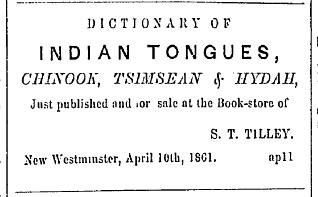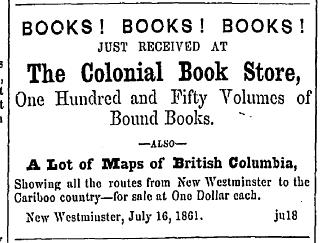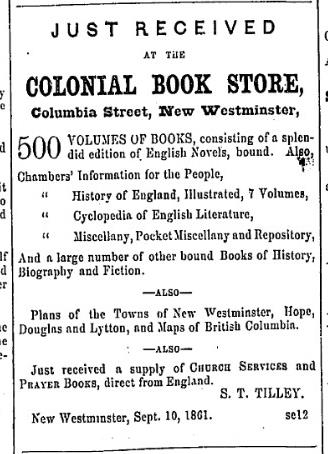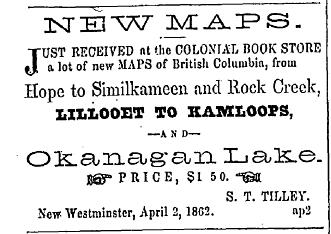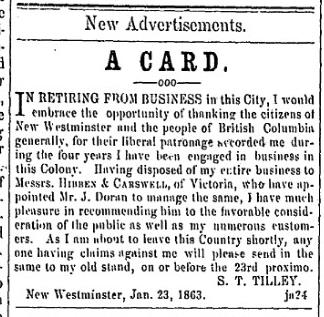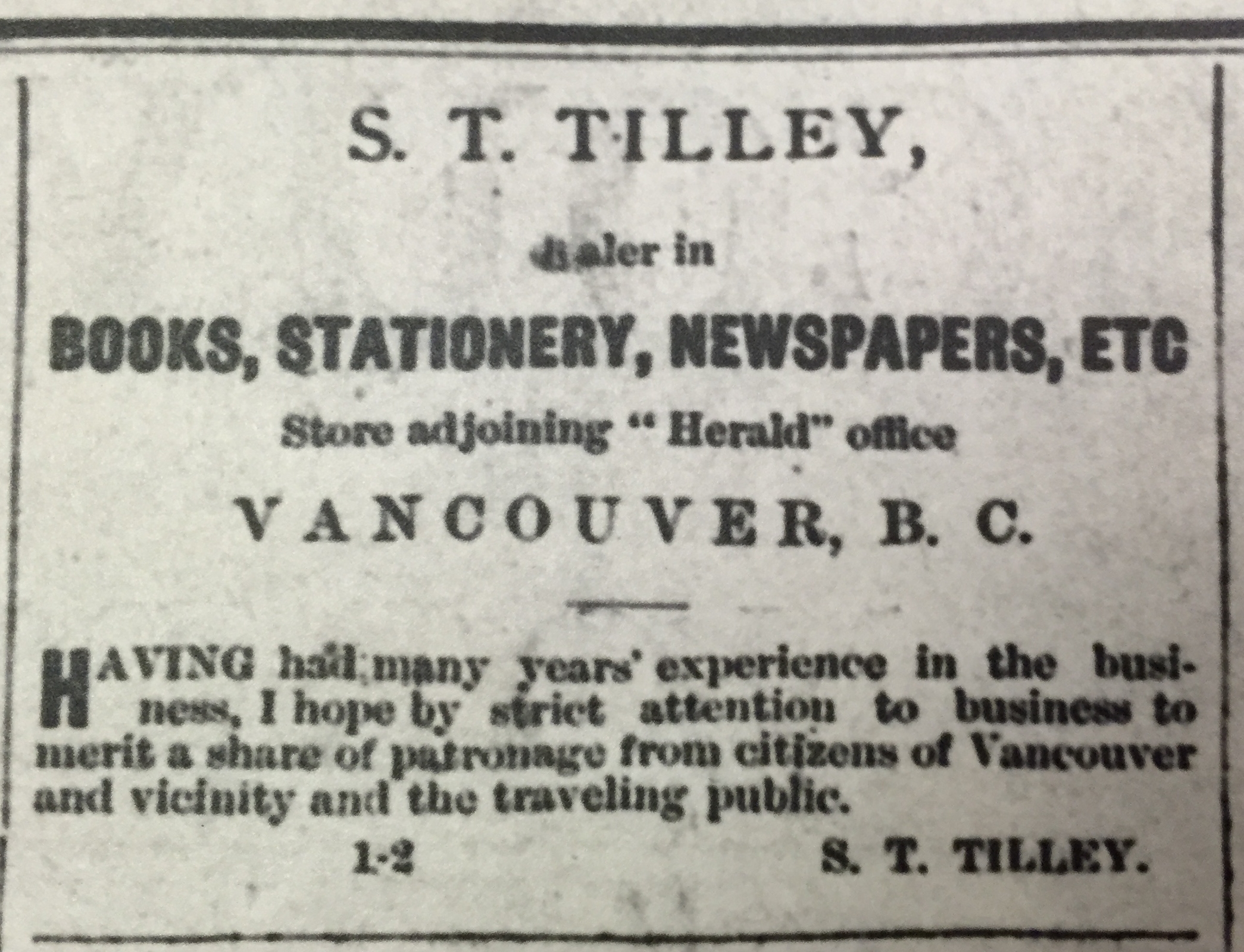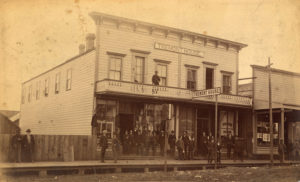I’ve previously published quite a lot about Seth Thorne Tilley, one of Vancouver’s first booksellers (if not the first; click here for the beginning of Tilley’s story).
We know that Tilley operated a store in Vancouver prior to the Great Fire of June 1886, and that he rebuilt on Cordova Street following the fire. This image from 1887 shows his new store on the near right of the scene:
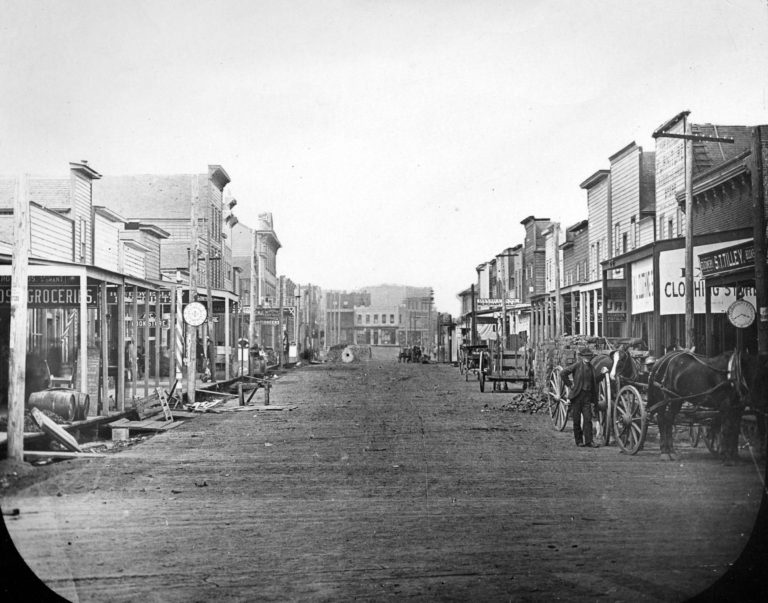
But click on the photo and enlarge the view, and you will see that Tilley had some competition right across the street, from the B.C. Book Store (its partially hidden sign is about a quarter of the way down the block, to the left of the round clock).
At first I thought that the B.C. Book Store might belong to the British Columbia Stationery and Printing Company, founded by Thomas R. Pearson, John B. Ferguson, and David Robson, and in operation on Cordova Street in 1886/87 (the company also had branches in Victoria and New Westminster). And in fact it seems there might be some truth to this, at least as far as that Cordova Street location was concerned.
The 1887 Mallandaine B.C. directory shows C.Z. Perry (Charles) as the company’s Vancouver manager:
But a year later, in the 1888 directory, Perry appears as the manager of a store in the same location, but bearing a different name:
And the same directory carries an ad for the B.C. Book Store, showing W. Harrison as the proprietor:
Here’s what I think might have happened. We know from newspaper reports that the British Columbia Stationery and Printing Company broke apart in January 1887 and that Pearson took over the Vancouver and New Westminster branches, while Ferguson carried on in Victoria.
We also know that Pearson sold the New Westminster store in March 1887, and that he entered the real estate and insurance business in partnership with his father-in-law. I haven’t found any reports about what he did with the Vancouver store, but it’s not far-fetched to assume that he sold it as well.
I’m guessing—and this really is only a guess—that Harrison, formerly a bookseller in Victoria and Yale, was the buyer of the Vancouver outlet, and that he changed the name to the B.C. Book Store.
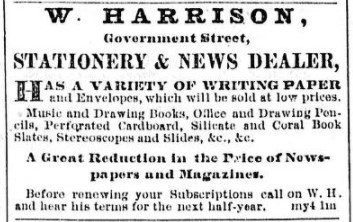
Harrison and Pearson even had a previous bookstore-related connection. On April 11, 1883, the British Columbian reported that Harrison had sold his Yale book and stationery business to Pearson. That same article reported that Harrison was on his way to Cobourg, Ontario, to visit his parents.
When Pearson wanted to get out of the trade in Vancouver, perhaps Harrison was ready to get back into the business. It’s a theory.
Wherever the truth lies about how Harrison ended up owning the B.C. Book Store, own it he did until November 1889, when Books and Notions reported that he had sold it to Webster & Co. and was once again on his way to Cobourg. By this time, the B.C. Book Store was located in the rear of the Wilson Hall block on Abbott Street (Harrison had moved there in June 1889).
In June 1891, Harrison shows up as a bookseller in Steveston, and then in 1894 as a stationer in Kaslo, and from there it appears that he left the book business behind and invested in a Slocan-area mine.



